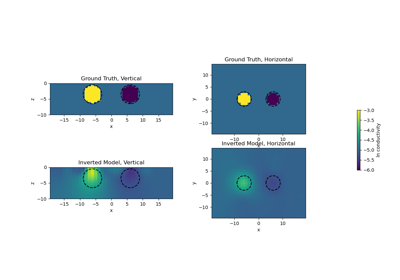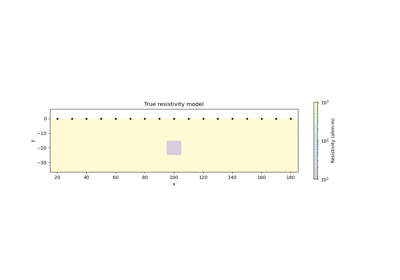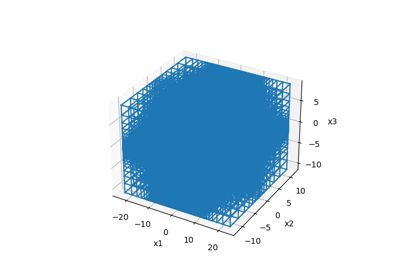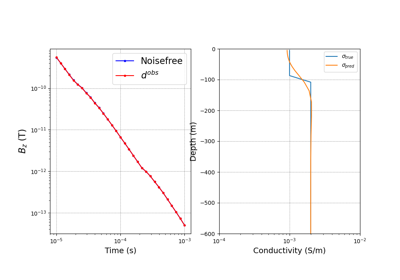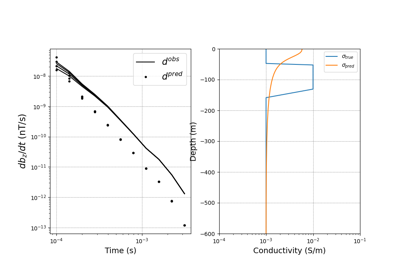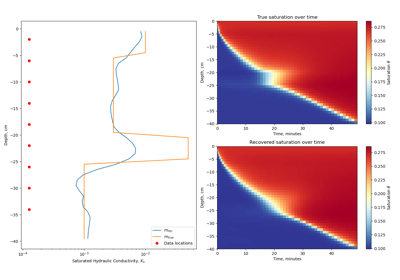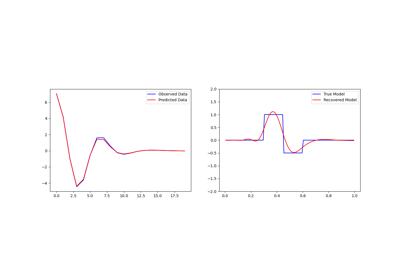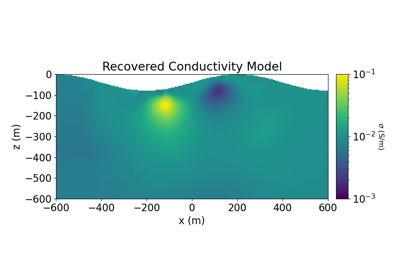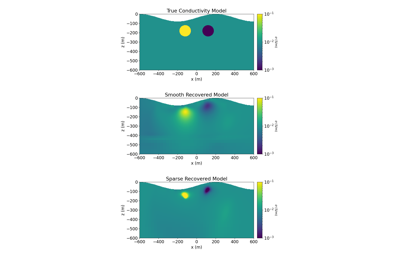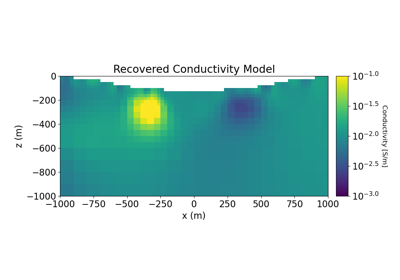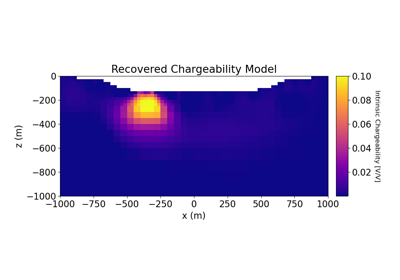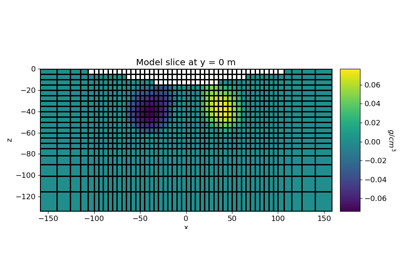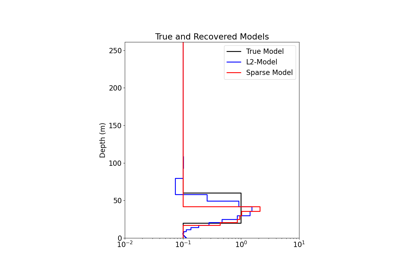simpeg.data_misfit.L2DataMisfit#
- class simpeg.data_misfit.L2DataMisfit(data, simulation, debug=False, counter=None, **kwargs)[source]#
Bases:
BaseDataMisfitLeast-squares data misfit.
Define the data misfit as the L2-norm of the weighted residual between observed data and predicted data for a given model. I.e.:
\[\phi_d (\mathbf{m}) = \big \| \mathbf{W_d} \big ( \mathbf{d}_\text{pred} - \mathbf{d}_\text{obs} \big ) \big \|_2^2\]where \(\mathbf{d}_\text{obs}\) is the observed data vector, \(\mathbf{d}_\text{pred}\) is the predicted data vector for a model vector \(\mathbf{m}\), and \(\mathbf{W_d}\) is the data weighting matrix. The diagonal elements of \(\mathbf{W_d}\) are the reciprocals of the data uncertainties \(\boldsymbol{\varepsilon}\). Thus:
\[\mathbf{W_d} = \text{diag} \left ( \boldsymbol{\varepsilon}^{-1} \right )\]- Parameters:
- data
simpeg.data.Data A SimPEG data object that has observed data and uncertainties.
- simulation
simpeg.simulation.BaseSimulation A SimPEG simulation object.
- debugbool
Print debugging information.
- counter
Noneorsimpeg.utils.Counter Assign a SimPEG
Counterobject to store iterations and run-times.
- data
Attributes
The data weighting matrix.
SimPEG
Counterobject to store iterations and run-times.A SimPEG data object.
Print debugging information.
Mapping from the model to the quantity evaluated in the object function.
Number of data.
Number of model parameters.
Shape of the Jacobian.
A SimPEG simulation object.
Methods
__call__(m[, f])Evaluate the residual for a given model.
deriv(m[, f])Gradient of the data misfit function evaluated for the model provided.
deriv2(m, v[, f])Hessian of the data misfit function evaluated for the model provided.
map_classalias of
IdentityMapresidual(m[, f])Computes the data residual vector for a given model.
test([x, num, random_seed])Run a convergence test on both the first and second derivatives.
Galleries and Tutorials using simpeg.data_misfit.L2DataMisfit#
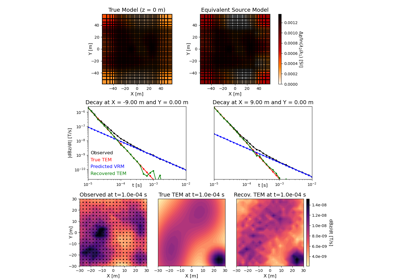
Method of Equivalent Sources for Removing VRM Responses

Petrophysically guided inversion (PGI): Linear example

Petrophysically guided inversion: Joint linear example with nonlinear relationships

Heagy et al., 2017 1D RESOLVE and SkyTEM Bookpurnong Inversions
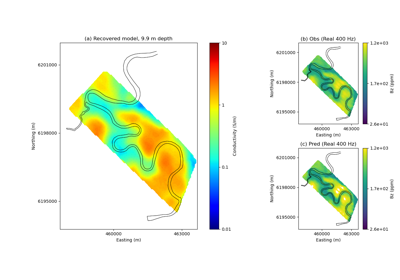
Heagy et al., 2017 1D RESOLVE Bookpurnong Inversion

Sparse Norm Inversion for Total Magnetic Intensity Data on a Tensor Mesh
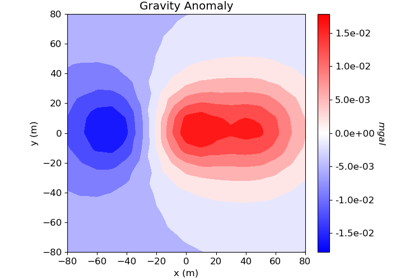
Cross-gradient Joint Inversion of Gravity and Magnetic Anomaly Data

Joint PGI of Gravity + Magnetic on an Octree mesh using full petrophysical information

Joint PGI of Gravity + Magnetic on an Octree mesh without petrophysical information

Sparse Norm Inversion of 2D Seismic Tomography Data
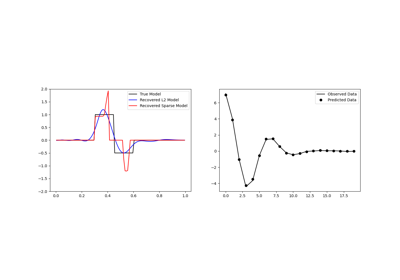
Sparse Inversion with Iteratively Re-Weighted Least-Squares
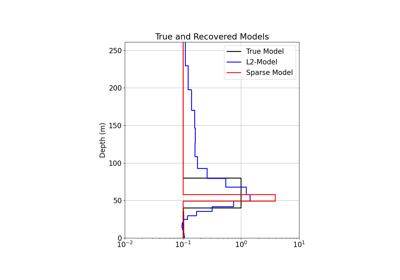
1D Inversion of Time-Domain Data for a Single Sounding
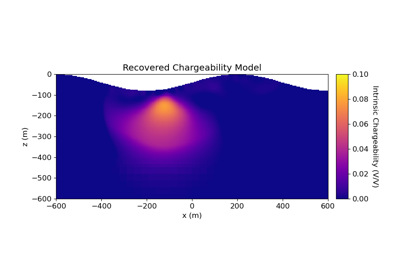
2.5D DC Resistivity and IP Least-Squares Inversion





